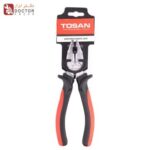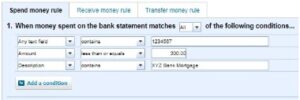Content
Many organizations implement a policy for tangible asset expenditures which sets a materiality threshold over which purchases will be capitalized. This can be for a single asset purchase or a group of similar assets purchased around the same time. Capitalizing relatively insignificant purchases does not improve the readability of financial statements and may end up costing an entity more than the asset’s value. Each company makes its balance sheet statement that contains shareholders’ equity, assets, and liabilities. In this statement, assets are differentiated based on their lives. They then become of two types, non-current assets, and current assets.
- All such information is provided solely for convenience purposes only and all users thereof should be guided accordingly.
- Other businesses, like a home business that generates crocheted blankets, will require next to no fixed assets.
- It enhances asset management by analyzing status, assessing value and risk, and anticipating failures.
- Companies purchase non-current assets – resources that provide positive economic benefits – to generate revenue as part of their core operations.
- Assets that are under renovation or construction are capitalized if the total cost is $100,000 or 20% of the building.
A higher ratio means fixed assets are being used more adequately than a lower ratio. The fixed asset turnover ratio is best analyzed alongside profitability as it does not represent anything related to the company’s ability to generate profits or cash flows. Many organizations would not exist or generate revenue without their property, plant, and equipment. To understand accounting and financial reporting, begin with a broad-level knowledge of fixed assets. Based on the type of business a company is engaged in, it may own more fixed assets.
What is a Fixed Asset?
The value of net fixed assets is expressed in the form of currency. However, you can take it a step further by expressing it as a ratio. You find the ratio by dividing the result of net fixed assets with the gross fixed assets.
- Depending on the nature of an entity’s business, it may make sense to group items that share common characteristics or purposes.
- If the asset’s value falls below its net book value, the asset is subject to an impairment write-down.
- Fixed assets can include buildings, computer equipment, software, furniture, land, machinery, and vehicles.
- An understanding of what is and isn’t a fixed asset is of great importance to investors, as it impacts the evaluation of a company.
- Connecting you to a trusted network of resources created for your financial and personal success.
- They often take a sizable investment to acquire and are intended to be used over a long period of time.
Get instant access to video lessons taught by experienced investment bankers. Learn financial statement modeling, DCF, M&A, LBO, Comps and Excel shortcuts. For example, if a company’s competitors have ratios of 2.25, 2.5 and 3, the company’s ratio of 3.75 is high compared with its rivals.
Examples of Fixed Assets
The report is a schedule showing the beginning balance, purchases and/or additions, disposals, depreciation, and ending balance of fixed assets for a certain time period. It may be generated by asset class category or other subsections such as a location, department, or subsidiary. A fixed asset roll forward is typically created quarterly and/or annually. This schedule is frequently requested from auditors for use in their workpapers and audit testing. Since fixed assets are used for a longer period of time, they are likely to devalue with use. Depreciation is the practice of accounting for an asset’s decrease in value as it is used.
- In terms of fixed assets, impairment commonly happens as a result of these assets being physically damaged.
- Other types of fixed asset equipment are robots used on the production line and hospital equipment such as X-ray machines and computed tomography, or CT, scan equipment.
- The value of fixed assets continues to decrease regularly because of typical wear and tear, similar to goods people normally own.
- To calculate net fixed assets, you will need to know the gross amount of fixed assets of the company.
- The major difference between the two is that fixed assets are depreciated, while current assets are not.
An understanding of what is and isn’t a fixed asset is of great importance to investors, as it impacts the evaluation of a company. Easily add, change, dispose or transfer fixed assets for your business or your clients. If you’re interested in finding out more about the fixed assets, then get in touch with our financial experts. Find out how GoCardless can help you with ad hoc payments or recurring payments. If a company is unable to buy PP&E out of its own resources, it has two options.
Financial management
Investors also use this ratio to decide when a company may be purchasing major new fixed assets. Fixed assets are usually found on a balance sheet in a category called property, plant and equipment, according to Dummies. And you also need to account for any liabilities, like loans you owe on your fixed assets. Some industries need more fixed assets than others in order to make products or deliver services. These include the construction, farming, transportation and fishing industries.
- Capitalizing relatively insignificant purchases does not improve the readability of financial statements and may end up costing an entity more than the asset’s value.
- Yet, inventory is classified as a current asset, whereas PP&E is treated as a non-current asset.
- These kinds of fixed assets are not recorded on the balance sheet.
- Fixed assets are non-current assets that have a useful life of more than one year and appear on a company’s balance sheet as property, plant, and equipment (PP&E).
- They are noncurrent assets that are not meant to be sold or consumed by a company.
- However, land cannot be depreciated because it cannot be depleted over time unless it contains natural resources.
As stated above, various methods may be used to calculate calculate depreciation for fixed assets. It depends on the nature of an organization’s business which method best reflects actual use and the decrease in value of their fixed assets. Fixed asset accounting refers to the action of recording an entity’s financial transactions for its capital assets. For organizations reporting under US GAAP, ASC 360 is the appropriate accounting standard to follow. For most organizations, fixed assets are a significant investment and must be accounted for properly. Current assets include rotating physical goods, such as supplies and inventory.
Fixed asset turnover ratio
One method to measure how efficiently a company utilizes its fixed asset base is the fixed asset turnover ratio, which measures the efficiency at which a company can generate revenue using its PP&E. Fixed assets are non-current assets on a company’s balance sheet and cannot be easily converted into cash. Second, depreciation allows a business to account for the cost of an item over two or more years. This avoids fluctuations in its financial statements every time a new fixed asset is purchased and thus gives a more realistic view of the business’ overall performance. These assets are considered fixed, tangible assets because they have a physical form, will have a useful life of more than one year, and will be used to generate revenue for the company. Most tangible assets, such as buildings, machinery, and equipment, are depreciated.

A fixed asset is a long-term tangible property or piece of equipment that a company owns and uses in its operations to generate income. These assets are not expected to be sold or used within a year and are sometimes recorded on the balance sheet as property, plant, and equipment Examples Of Fixed Assets (PP&E). Fixed assets are subject to depreciation, which accounts for their loss in value over time, whereas intangible assets are amortized. Fixed assets are often contrasted with current assets, which are expected to be converted to cash or used within a year.
Statistics for state and local governments combined and for the U.S. government include the age and value of assets. Many readers of financial statements are interested in cash flows relative to expenditures. Lending institutions and creditors would like to see that an organization is using the money they borrowed effectively and has the ability to repay debts. Investors would like to see the money they invested is being used to generate sufficient cash to receive a return on their investment. This ratio could also be helpful internally for budgeting and investment strategy. Transfers may occur during the lifecycle of a fixed asset for various reasons.

As such, companies are able to depreciate the value of these assets to account for natural wear and tear. Fixed assets most commonly appear on the balance sheet as property, plant, and equipment https://kelleysbookkeeping.com/ (PP&E). Asset tracking software and management solutions offer a reliable way to oversee fixed assets. Included are features like location tracking, work order processing and audit trails.
Analysts need to know which accepted method the company uses to ascertain how the values were determined. This measurement is mostly useful for those who want to estimate the market value of a company’s fixed assets. Knowing the net fixed assets, they can determine how much they would need to invest in the company’s fixed assets if they owned them.

Lascia un Commento
Vuoi partecipare alla discussione?Sentitevi liberi di contribuire!